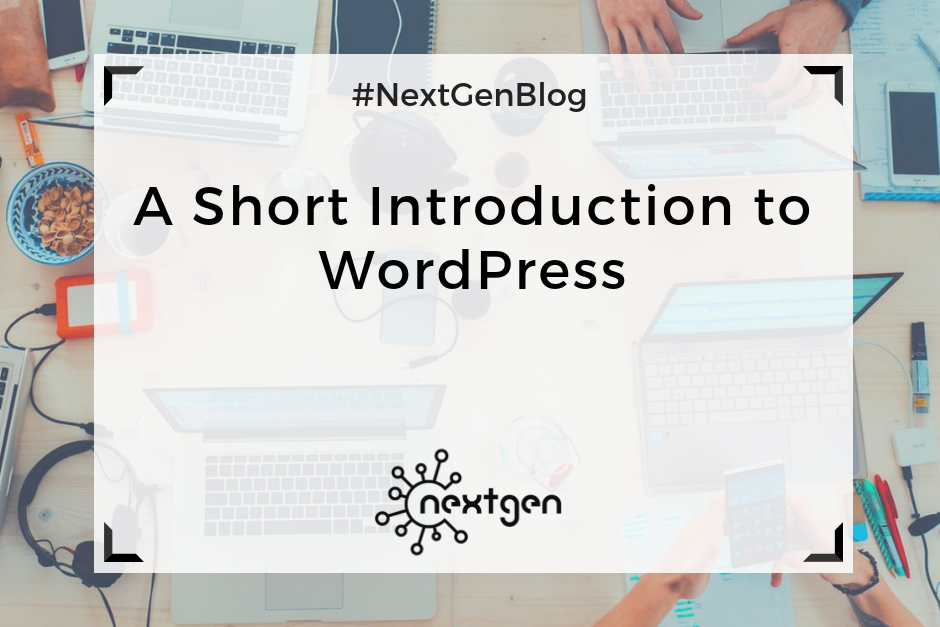
by Sofi | Oct 13, 2017 | Digital Marketing Tools
WordPress is a powerful, online platform, that can be used to create a website or start a blog. It’s great for beginners, because you don’t need to be a developer or have any coding skills to be able to use it. If you want to do some customization, you can hire a developer to do it for you. But most of the WordPress themes offer plenty of built in options and plugins, enough for successfully creating and managing a website.
I started using WordPress to work on a new website, and was able to get hold of it in just a few weeks. It might seem complicated at first, but with a little bit of time and dedication, I think anyone can learn how to use it. So, if you’ve never used WordPress before, here are some basics to give you an idea of how it works.
Setting up a website
The first thing you need to do before you set up a WordPress website, is choosing a domain name and a web host service. Although WordPress is a free content management system, you’ll still need to spend a few dollars on the domain name and web hosting. Find a simple domain name, that is memorable, and easy to type. Consider what your hosting needs are, check the options and prices of different web hosting sites and choose one.
After you install WordPress to your domain, the next step is setting up your website. When you sign into WordPress, you will see the Dashboard’s home page. In the Dashboard menu you can find all the available tools and settings for editing your website, which are fitted in a sidebar on the left side of the screen. It’s relatively simple to navigate, and if you have a trouble finding a feature you need, you can always use the “Help” tab in the upper right corner of the screen. It’s also a good idea to watch some tutorial videos before you start editing your site. This will save you the time you need to spend to figure all out by yourself.
To start editing your new WordPress site, you first need to choose a website theme in the “Appearance” section on the Dashboard. This determines the general look of your site. You can choose one from the themes available for free, or you can choose some of the priced themes. After you set your theme, you can start designing your website by setting a background, adding widgets, installing plug-ins, adding pages, arranging your menus etc.
Adding content
After you set your site’s appearance, you can finally start to create and add content. You can start by adding “posts” and “pages”, depending of the type of site you created.
If you create a blogging site, most of the time you’ll publish your content by adding new posts, which appear as blog posts on your site. They are sorted by date, in reverse chronological order, which you can edit anytime if you want to change their order of appearance. You also have the option to divide your posts into different categories, as well as add a set of tags in each post, which will help your readers easily find your content.
If you create another type of website, such as a business website, you can have a separate page for blogs, and publish your posts there. You can set the pages you add to appear in a navigation menu in the header section of your site. In each page, you can write appropriate content, and add media – photos and videos. You can also create so called “child pages”, which are pages that are subordinates to other pages. To arrange your pages in any order you like, you can go to “Menus” in the “Appearance” section of the Dashboard menu.
You can also add different types of widgets to your site, that perform specific functions. You can add widgets for search bars, galleries, quotes, social media pages, etc. This type of widgets will improve your site’s look and functionality.
Another thing you can do is add plugins, which are useful programs that integrate with WordPress to enhance your site with new features. An excellent plugin, which I use and highly recommend, is Elementor. It’s a page builder plugin with great features, and is very simple to use. It can significantly ease the process of adding any type of content to your site. Of course, there are many other useful plugins, so make sure to check them out too, if you start using WordPress.
***
Once you learn the basics, WordPress is pretty simple to use. If you’re totally new to the platform and have never used it, hopefully we helped you understand how to get started. So, go ahead and create your new awesome website with WordPress!
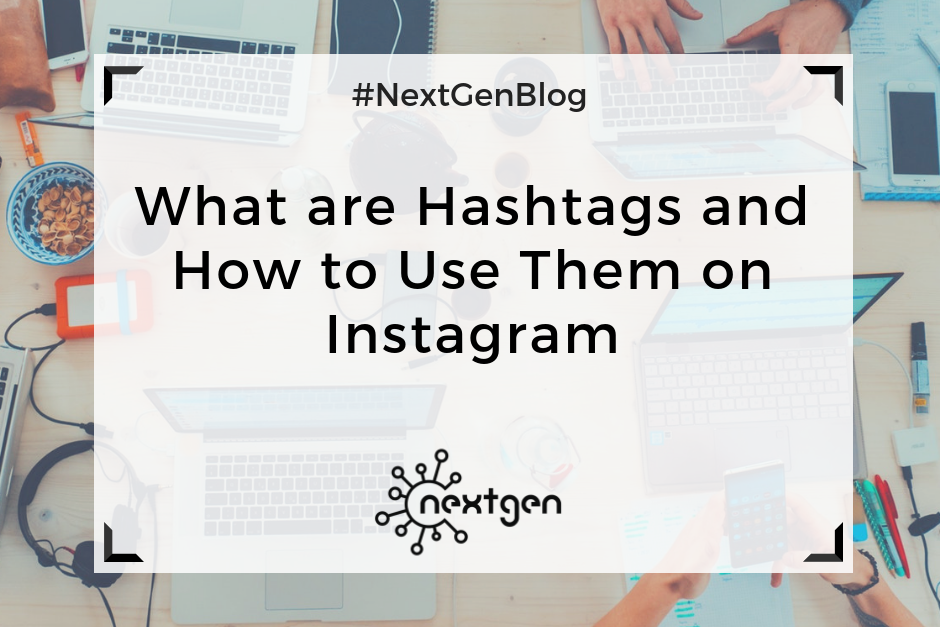
by Sofi | Oct 6, 2017 | Social Media Marketing
Hashtags are words or phrases that appear as clickable links on social media posts. They are preceded by the # symbol, also known as pound sign, or hash sign. People use hashtags to give context to their posts, and make their content easily shareable and easily found. Hashtagging categorizes and aggregates posts based on a common topic. When you click on a hashtag, you can see other posts that include the same hashtag.
Hashtags first appeared in 2007 on Twitter, as a way to categorize messages. Today, they are used on all major social media networks, such as Instagram, Facebook, Google plus, etc.
Adding hashtags can be fun, but it can also help you create a great social media presence and build brand awareness for your business, if you do it right. Instagram has become the leader in hashtags usage, so we will give you some tips on how to use them on this social media platform.
#1 Right wording
If you decide to use hashtags in your posts on Instagram to make them more discoverable, it’s best to use words or phrases that are relatively short and common. Long and complicated phrases confuse people, and might not be frequently used or searched for by others. If you add an unusual or uncommon hashtag, people won’t search for it, meaning your post won’t show up in their feed.
According to HootSuite “when it comes to choosing Instagram hashtags, the golden rule is: use only hashtags that are relevant to your brand, industry, and target audience.” If you want to build brand awareness, you need to tailor your hashtags according to your business. Use words that people will easily connect to your brand when they see them. It’s usually clever to come up with an original word or phrase that you will constantly include in your posts, so whenever people search for it, it will bring them to your posts and page.
#2 Number of hashtags
Depending on your post, you need to choose the optimal number of hashtags you’re going to use. This number varies greatly among different social media networks. For example, Twitter users are limited to texting 140 characters per tweet. This leaves them little room for experimenting with hashtags. On the other hand, Instagram has a limit of 30 hashtags per post. However, this doesn’t mean that you should add so many tags in all your posts. According to a research from TrackMaven, the optimal number of hashtags to include in an Instagram post is 9. So, keep this data in mind if you plan to add tags on your photos and videos on Instagram.
#3 Choosing hashtags
When it comes down to deciding on the actual tags you will use, there are few things you can consider, to help you choose the right ones. Generally, two types of Instagram hashtags are used: branded and community hashtags. Branded hashtags are the ones relevant to your brand and industry, and community hashtags are used to connect people based on mutual things of interest. You can use both types in your posts, to achieve optimal results. Start by researching your competition, see what kind of hashtags they use and how well they work. Then, you can use this information to come up with different, more relevant tags to reach more audience. Also, a good way to grow your audience on Instagram is to use trending hashtags. You can research which hashtags are trending at the given moment, and find tags that are relevant to your business. Finally, create your own hashtags that you think will resonate with your audience, but don’t forget to use the right wording.
***
Adding hashtags on your Instagram posts can be very valuable. It can help you reach a wider audience and increase brand awareness. So, next time you post a photo or video on Instagram, use these tips to come up with some awesome hashtags.
#HappyHashtagging ?
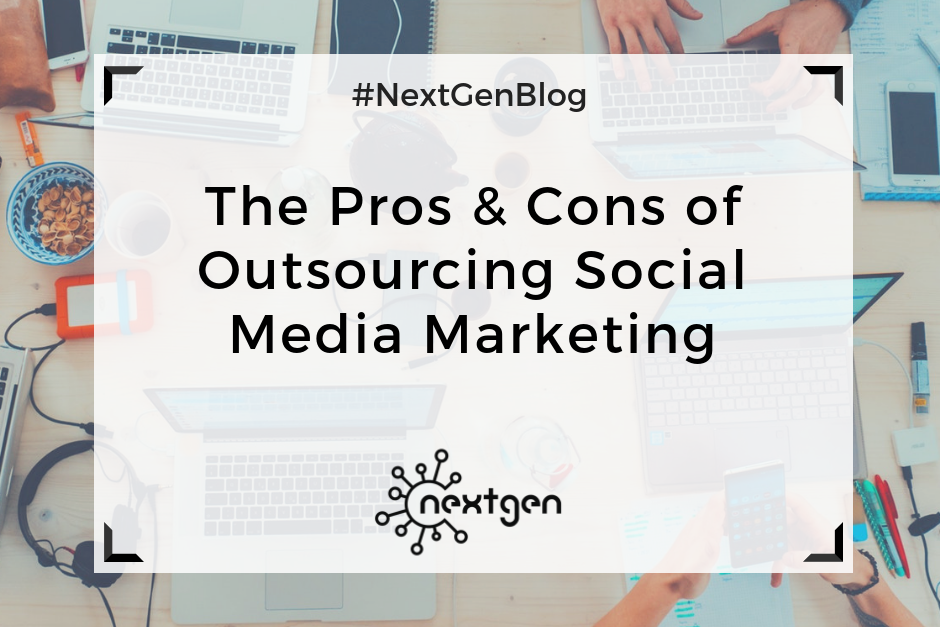
by Sofi | Sep 29, 2017 | Social Media Marketing
Most companies nowadays incorporate social media in their marketing strategies, because it is of key importance for the success of their business. If you own a business, a good social media presence will help you reach more customers and promote your products and services without investing too much money. While many entrepreneurs want to market their businesses on social media, some have the dilemma of whether they should hire marketing agencies or other marketing professionals to take care of their social media marketing activities, instead of their in-house teams.
Let’s look at both sides of the argument and list some pros and cons of outsourcing social media marketing.
Pros:
#1 Competence
People who do this job have an expert knowledge and experience in the field, and they know exactly what and how needs to be done. They have the necessary writing, designing, and other job specific skills, so they are highly competent and little likely to disappoint.
#2 Time
Outsourcing your social media activities will help you save time. Coming up with good social media marketing strategies, content design and creation, and sharing on social media takes time. So, if for example, you hire a marketing agency to take care of those things, in the same time you and your in-house team can focus your attention on other important issues in your business.
#3 Speed
If you hire experienced professionals to run your social media activities, you can expect fast and timely delivery. Good professionals can agree on specific deadlines and finish tasks on time. Furthermore, they will always be up to date with your business, and deliver new relevant content with a great speed.
#4 Trends
Marketers are always up to date with the latest news and trends in the industry. They spend plenty of time reading and researching new information, and are knowledgeable about important facts concerning marketing and social media. This influences the way they work, helping them come up with the best marketing strategies for your business. That’s another great benefit of outsourcing your social media marketing activities to experts.
Cons:
#1 Cost
Hiring marketing professionals costs money. While prices vary, there are many available agencies and individuals on the market that you can choose from. However, most of them are pricey, and would probably cost more than paying your in-house team to do the same job.
#2 Mistakes
A potential problem that can arise if other people are running your social media accounts, is making mistakes. The reason is that outsiders will never have the same inside knowledge of your company as your in-house team. If for example, someone asks a question on social media, they might not be able to know the right answer, and will end up either replying wrong, or ignoring the person. This kind of mistake can contribute to creating a bad image for your business.
#3 Relationships
Hired marketing professionals can engage with your audience on social media, but they will always lack authenticity and sincerity, since the business is yours and not theirs. The people in your team know your company best and are more loyal to your business than anyone outside the company. That’s why they can create much better connections and relationships with your followers on social media.
***
Outsourcing social media marketing can be costly and somewhat risky, but it can save you time and provide you a regular, great social media presence. Do you think outsourcing social media marketing is good for your business? Share your thoughts in the comment section.
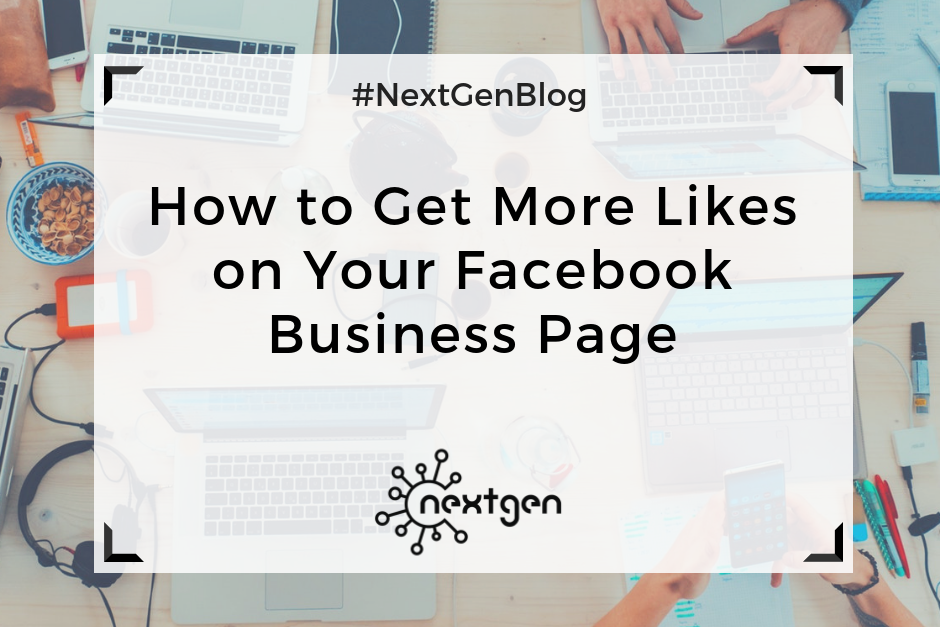
by Sofi | Sep 22, 2017 | Social Media Marketing
Facebook stands out as one of the largest social media networks out there, with the highest number of active users. That’s why millions of businesses use it to promote their products and services. If you have a Facebook page for your business and you’re trying to get more people to like it, you know it’s a tough job.
To successfully promote your business on Facebook you need to have people that see, like, and follow your page, because those people are your potential customers. There are plenty of methods you can use to attract people to your page and get more likes, so here are some that have been proven to work.
#1 Create valuable content
You should focus on creating valuable content that will inspire people to like and share it with other people. The better your content, the more people will like and share it. And the more people like and share your content, the more people will see it. Try to create entertaining, educational, and informational posts. And make sure you make your posts public, so they can be seen and shared by anyone.
#2 Post visuals
Whether it’s a photo, a video, or an illustration, people like visual content. According to Kissmetrics, photos get 53% more likes, 104% more comments and 84% more click-throughs on links than text-based posts. So, make sure you often post relevant but eye-catching photos and other visuals to your page. This can significantly increase your visibility, and get you new page likes.
#3 Keep it short and simple
Your posts should be brief and pleasant. People have short attention spans, so you don’t want to bore them with too much information. If you’re sharing a text, limit it to a small number of characters. According to jeffbullas.com, “posts with less than 80 characters in length receive 66% higher engagement than longer posts. Very concise posts – those between one and 40 characters – generate highest engagement.”
#4 Use the right timing
To get the best results, you should post your content at the right time of the day. This means the time of day when your target audience is most likely to be online. For example, people are more active on Facebook during the “non-busy” hours, when they are not at work. However, the best time to post depends on your business and your audience, so do some tests and research to find out what’s the optimal time to share your content.
#5 Use Facebook ads
Paid ads are always a good way to promote your products and services, and reach new potential fans on Facebook. You can target your audience based on location, demographics, interests, and so on. Based on your budget, Facebook will give you an estimation of the number of people you’re reaching.
#6 Promote your page
You can also attract people to your Facebook page by promoting it on other sites. For example, share it on all the other social media networks you use, and promote it on your main website. Let people outside of Facebook know that your page exists, and invite them to visit, like and share it.
***
Capturing the attention of your Facebook audience is important because it can help you achieve your business goals. By getting more followers on Facebook, you’re getting new potential customers.
Use the above methods in your strategy, and good luck on your quest to improve your Facebook presence, and get more likes on your page!
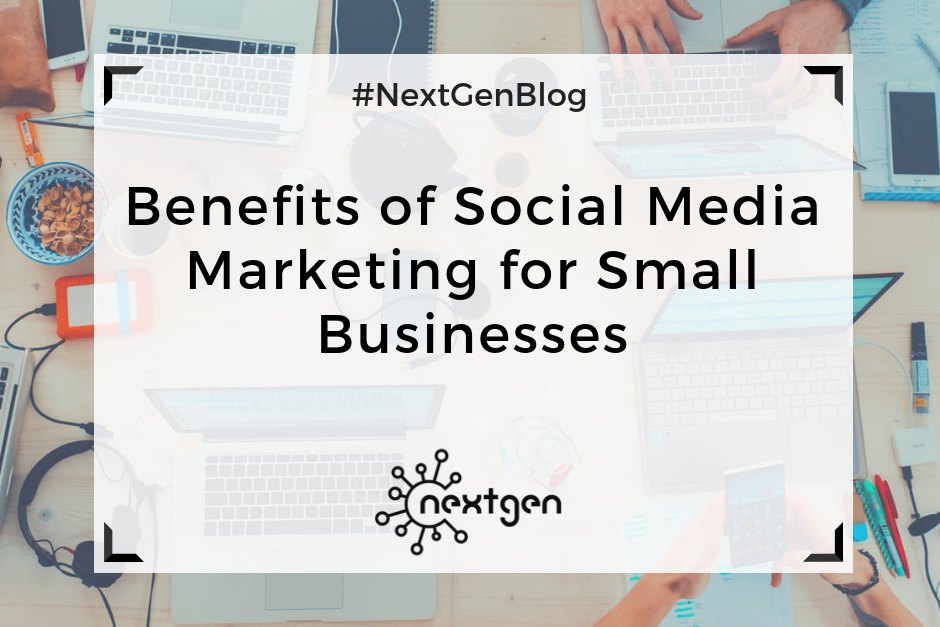
by Sofi | Sep 15, 2017 | Social Media Marketing
People use social media on a daily basis. This makes it a very suitable marketing platform for all kinds of business, and recently, social media marketing is becoming an increasingly popular method embraced by small businesses. This is mostly because it’s an inexpensive but efficient promotion tool. There is a variety of social media platforms, most of which are cost-free, easy to navigate, and have millions of users. According to BIA/Kelsey, 77.6% of small businesses use social media for marketing.
There are lots of ways small businesses can benefit from social media marketing, so let’s discuss some of them.
#1 Brand awareness
Social media marketing gives small businesses the opportunity to show off their products and services to the right audience, at any time. People can access their favorite brand’s page 24/7, since there’s no opening and closing time on social media. It’s important for the companies to choose and use the right social media networks, where their buyer personas are most likely to be active users. They need to design and publish relevant and shareable content on a regular basis, and occasionally engage with customers. This way they can create the right image of their brand over time, and consequently increase brand awareness.
#2 Website traffic
Social media marketing helps small businesses drive more clicks to their websites, by social media engagement. To attract visitors, they need to optimize their content for each social media network. They can accomplish this by publishing easily shareable content, using great visuals, attaching external links to their posts, and creating ads. Another effective method is connecting with customers by creating surveys, asking questions, and engaging in conversations. SEO plays a very important role too. A company’s social media account affects their SEO score as well, affecting their website traffic in turn.
#3 Relationship with customers
Unlike big businesses, small businesses tend to have a smaller audience on social media, so they can easily improve the relationships with their established or potential new customers. By dedicating a portion of their time to interact with their customers, companies can connect with them on a deeper level, and show them they care about them. They can have an effective two-way communication, answering their questions, talking about their interests and concerns, and so on. Having a good relationship with customers is not only beneficial, but essential for the success of any business, because without its customers any business would cease to exist.
#4 Cost-effectiveness
Traditional marketing is expensive, but social media marketing can be done for free or at a low cost. Small businesses can benefit from this, especially if they’re on a tight budget. By focusing on distributing a great content and buzz marketing, they can have a great social media presence and promote their brands without investing any money. Paid ads, on the other hand, can help them reach wider and better targeted audience. Fortunately, paid advertising on social media can be done for a relatively low cost as well. In each scenario, social media marketing is a very cost-effective option.
Having these benefits in mind, small businesses should consider incorporating more social media marketing in their strategies.






